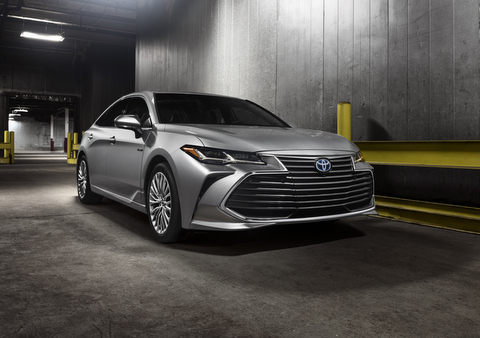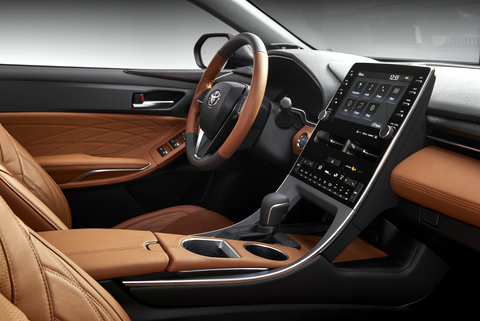Greater Efficiency and an All-New Look Shown in Detroit
Toyota introduced its stunning all-new fifth-generation Avalon sedan yesterday at the North American International Auto Show in Detroit. The radically redone full-size sedan retains its V6 and hybrid powertrains as it moves to the Toyota New Global Architecture (TNGA) shared with the Camry and other newer models.

The Toyota Hybrid System II (THS II) in the 2019 Toyota Avalon Hybrid features many high-tech improvements for greater fuel efficiency (though Toyota execs didn’t say how much). It combines a 2.5-liter Dynamic Force four-cylinder engine with a 650-volt electric motor and a continuously variable transmission (CVT). Since the current Avalon is rated at 40 mpg city and the smaller new Camry on the updated chassis gets more than 50 mpg, would it be out of line to expect a 5 mpg boost for the new Avalon? — ed)
For 2019, the new four-cylinder Dynamic Force engine runs cleaner, is more fuel efficient and is more powerful than previous editions. Toyota’s Variable Valve Timing intelligent system with electric motor (Dual VVT-I with VVT-iE), employs an electric motor instead of using oil pressure to control variable valve timing. This aids fuel efficiency and promotes cleaner exhaust emissions, particularly in cold climates.
The direct injection four-stroke gasoline engine combines higher-pressure direct fuel injection and lower-pressure port fuel injection, applying each method based on specific driving parameters. New multi-hole nozzle direct injectors, with six holes per injector, further improve fuel efficiency.
The THS II uses two electric motors. One supplements the charging of the nickel-metal hydride battery, while the other assists the engine. The new battery pack moves from the trunk to under the rear passenger seat, thanks to the TNGA platform.
More Efficiencies
Efficiencies abound. The new power control unit (PCU) is lighter and smaller, and is located above the transaxle, which lowers mass for better handling. The new PCU has 20 percent less energy loss for conversion efficiency for the transaxle and electric motor. The cooling system’s energy loss drops 10 percent. The PCU’s DC-DC converter output filter is smaller, lighter, and quieter as well.

For greater fuel saving, Auto Glide Control (AGC) automatically calculates efficient coasting. Normally, the car uses engine braking to slow down when the driver lifts off the accelerator. AGC limits loss of vehicle speed while coasting to a stoplight.
The 2019 Toyota Avalon Hybrid has some driver-oriented features, too, including Sport drive mode and Sequential Shiftmatic technology. The Sport drive mode applies power from the hybrid system for improved acceleration. Drivers can “shift” through the CVT’s six simulated gears using steering-wheel mounted paddles or the gearshift.
Regardless of drivetrain, the new Avalon is longer, lower, and wider, thanks to the move to the new platform. The large grill, slim, high-tech lighting, sharply defined side panels and sleek tail help to bring the co-efficiency of drag to a new low of .27.
The all-new Avalon was designed and engineered in the U.S., and is assembled in Georgetown Kentucky, its home for more than 20 years. It continues to be the only full-size hybrid in its segment. It goes on sale in late Spring.
Other Stories from NAIAS 2018:
News: Chevrolet Silverado Diesel Signals Resurgence
News: Infiniti Q Inspiration Concept Introduced
News: Smart Releases 10th Anniversary Edition
News: All-new 2019 Honda Insight Coming
News: 2018 Ford F-150 Gets a Diesel
Related Stories You Might Enjoy:
Road Test: 2014 Toyota Avalon Hybrid
Road Test: 2017 Toyota Camry Hybrid


Want real gears dbl clutch, not pretend shift belt
@John Tufts,
We feel your pain, John, but it looks like all full hybrids are all going the way of CVTs to maximize fuel economy. That said, they’re adding “fake gears” to CVTs to replicate your desire for shift points. Give one of those a spin and let us know what you think. –ed.